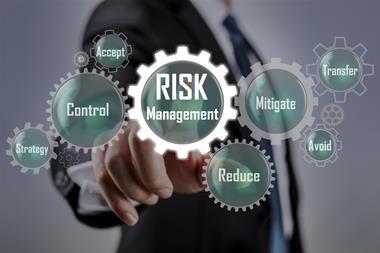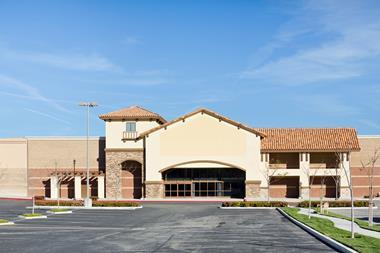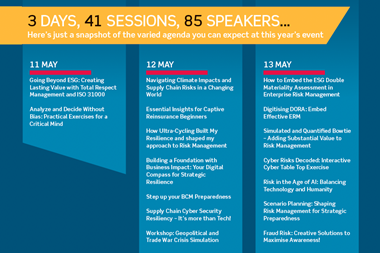Captives, as the most established corporate alternative to conventional insurance, are enjoying boom times. This was true before 11 September 2001, but the market reaction to the tragic events of that day is likely to fuel further expansion of captive operations. Even in the preceding soft market, captive options continued to gain support. Now risk managers may have rather less choice in the matter.
All the main captive domiciles are reporting heightened activity. This trend is expected to continue. The Best's Captive Directory recorded 4,288 captives in existence worldwide at the end of 2000, and over 250 new formations are expected in the current year. However, these statistics understate what is actually occurring, which includes higher premium flow into existing captives and the more rapid development of segregated cell structures (such as Guernsey's protected cell and Cayman's segregated portfolio which together now provide risk financing facilities for over 265 users).
Assessing captive value
For risk managers and those who serve them these are challenging and exciting times. But they are also living in a more rigorous world, in which the benefits of the arrangements that they adopt need to be demonstrated more clearly than was previously deemed necessary. Whether it is the demands of corporate governance or increased concerns about capital efficiency under conditions of higher costs of risk, senior management is paying closer attention to the business case for using a captive.
Captive activity was often not subject to this degree of scrutiny in the past. This reflected a general perception that there was no easy way of calibrating the value a captive delivers, nor of showing whether it was achieving best practice.
How can you measure these issues? We believe an important part of the solution can be a rating of a captive's financial strength. Traditionally, it has sometimes been felt that a captive, being an essentially closed insurance company, did not need the rated status that open market insurers require to meet the expectations of brokers and policyholders. However, the dynamics of captive ventures are changing. A larger set of stakeholders have a real interest in how they operate and whether their risk profiles align with other corporate objectives. Obtaining a rating on a captive can satisfy that interest, while in the process offering management an independent assessment of the captive's status.
The purpose of rating a captive, at its simplest, is to evaluate financial strength relative to the insurance obligations undertaken. The process entails an impartial review of the manner in which the captive accepts and controls risk. As such, the analysis is an assessment of management capability as well as of financial robustness. It also provides benchmarking data that helps the captive to evaluate its performance in a wider context. In particular, while the maintenance of strict confidentiality is a fundamental part of the rating process, professional rating analysts have a unique industry wide perspective.
A practical approach
My own company is now rating about 200 captives. The basic test that these pass is that they have been trading for at least three years and have a minimum net worth of the equivalent of US$2m. Of this rated constituency, 98% are held to be Secure, with 75% being Excellent or Superior.
This experience indicates, as theory would predict, that the overall quality of captive business may be higher than that placed in the conventional market. Clearly, in any given case, we may conclude that a captive does not have the financial strength profile necessary for a secure rating but, in practice, this has been rare.
As far as the rating process is concerned, the information requirements, although extensive, concern matters that a well run captive will already be recording and monitoring. A rating review should pose no questions that management are not already asking themselves.
While the rating given to a captive will be comparable to those applied to all insurers (of which we rate over 6,000), it is our contention that it will only add value if it recognises the special features of the captive. For this reason we have a team over that is dedicated to the alternative risk financing market. Captives have a different relationship with their insured customers, both in how they grow and harness underwriting capacity and in the way they interface with other insurers and reinsurers. A rating on a captive must therefore take account of these factors.
For example, the status of a captive's parent or sponsor is clearly a material rating factor. However, we do not believe that a captive's financial strength is always a direct derivative of its parentage. Typically, captives are core to the groups they serve but they need to be judged more on their own merits, so that their own specific objectives are properly appreciated.
A rating on a captive, achieved after a rigorous evaluation, can therefore answer many of the questions that the various stakeholders in the captive have often had difficulty in getting answers to. And the accreditation of a rating should allow the captive to achieve further success.
--
Clive Thursby is European manager, alternative markets with A M Best Europe. He has 25 years experience of captives, most recently as head of insurance supervision in the Cayman Islands where he was responsible for regulating over 500 captives, Tel: 020 7397 0279
E-mail: cthursby@ambest.com
CAPTIVES THAT BENEFIT FROM A RATING
The types of captive that are most likely to benefit from a rating are summarised below. Some of the benefit relates to the feedback and perspective that the rating process can bring to management. However, it is important to stress that this is not a consulting service. No advice is offered. But, partly because of that, the conclusions of the rating analysts can provide a different and independent view of the captive.


















